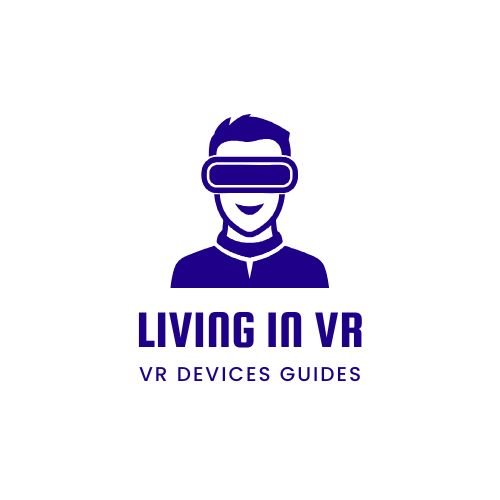You’ll achieve superior VR multiplayer experiences when you choose WebRTC’s ultra-low latency communication, peer-to-peer architecture, and cross-platform compatibility over traditional server-based solutions. WebRTC’s 20-30 millisecond response times maintain immersion while its RTCDataChannel API enables instant sharing of player positions and game states. You’ll also reduce operational costs by eliminating expensive dedicated servers and improve mobile performance through adaptive bitrate control. The following strategies will transform your VR development approach.
Understanding WebRTC’s Core Advantages for Virtual Reality Applications

The pursuit of seamless multiplayer VR experiences hinges on choosing the right communication technology, and WebRTC emerges as a standout solution for developers tackling real-time virtual interactions.
You’ll discover that WebRTC’s low-latency capabilities guarantee audio and video communications don’t disrupt immersive experiences, while its peer-to-peer architecture eliminates unnecessary server dependencies for direct user connections.
WebRTC’s adaptive bitrate control automatically adjusts streaming quality based on network conditions, maintaining consistent performance across varying bandwidths in virtual environments.
You’ll appreciate the built-in security features that encrypt media streams, protecting user privacy during multiplayer sessions.
The technology’s cross-platform compatibility enables you to develop applications that work seamlessly across browsers and devices, expanding your reach while maintaining robust real-time communication standards essential for engaging VR experiences.
Low-Latency Communication Requirements in VR Multiplayer Environments
Among WebRTC’s standout advantages, its ability to deliver ultra-low latency communication becomes paramount when you’re building VR multiplayer environments where every millisecond counts.
Even delays of 20-30 milliseconds can shatter immersion and disrupt real-time interactions between users. WebRTC’s peer-to-peer architecture eliminates server-induced bottlenecks that plague traditional solutions, enabling immediate responses during gameplay and collaborative tasks.
WebRTC’s peer-to-peer design cuts through server delays, delivering the instant responsiveness that VR multiplayer environments demand for seamless user interaction.
You’ll find that network conditions directly impact performance, making WebRTC’s optimization capabilities essential.
Through adaptive bitrate control, you can dynamically adjust stream quality based on bandwidth and CPU performance, ensuring smooth communication regardless of varying network conditions.
This real-time adaptation maintains the low-latency foundation your VR multiplayer experience depends on, creating engaging environments where users interact seamlessly without technical interruptions.
Peer-to-Peer Architecture Benefits for Immersive Gaming Experiences

You’ll find that WebRTC’s peer-to-peer architecture eliminates the middleman by establishing direct connections between players, cutting out server delays that can break VR immersion.
This direct approach drastically reduces latency since your data doesn’t need to travel through centralized servers, giving you the split-second responsiveness that VR multiplayer games demand.
You’re also maximizing bandwidth efficiency because each connection only carries the data relevant to specific player interactions rather than routing everything through a central hub.
Direct Connection Advantages
When latency becomes the enemy of immersion in VR multiplayer gaming, WebRTC’s peer-to-peer architecture emerges as a game-changing solution that connects players directly without routing through centralized servers.
Direct connection through P2P communication delivers three critical advantages for immersive multiplayer VR:
- Ultra-low latency – You’ll experience minimal delays in real-time communication capabilities, ensuring your movements and actions translate instantly to other players.
- Enhanced video communication – WebRTC applications provide seamless communication for both audio and visual data streams without server bottlenecks.
- Custom data transfer – The RTCDataChannel API enables efficient use of bandwidth for game state updates and custom interactions.
This direct approach eliminates server relay delays, creating truly responsive gaming environments where every gesture and voice command maintains the seamless communication essential for VR immersion.
Reduced Latency Gaming
Since traditional server-client architectures introduce communication delays that can destroy VR’s sense of presence, WebRTC’s peer-to-peer architecture transforms multiplayer gaming by creating direct pathways between players.
You’ll experience reduced latency that’s vital for maintaining VR gaming immersion, where milliseconds determine whether interactions feel natural or jarring.
WebRTC’s low-latency capabilities enable real-time communication that keeps fast-paced multiplayer games synchronized. Through optimized data transmission via RTCDataChannel, you can exchange important game information instantly.
This technology supports seamless real-time voice and video chat without noticeable lag, ensuring your conversations flow naturally while you’re engaged in virtual battles or collaborative experiences.
The direct connections eliminate intermediary servers that typically bottleneck communication, delivering the responsive gameplay necessary for compelling VR experiences.
Bandwidth Efficiency Gains
While traditional server-based architectures consume massive amounts of bandwidth by routing all player data through central hubs, WebRTC’s peer-to-peer architecture dramatically reduces bandwidth requirements by establishing direct pathways between VR players.
This bandwidth efficiency creates three key advantages for your VR development:
- Direct Data Transmission – The RTCDataChannel API enables efficient transfer of game state information without overwhelming network resources.
- Scalable Multiplayer Scenarios – Multiple participants share data without increasing individual bandwidth requirements through optimized peer connections.
- Enhanced Mobile Performance – Reduced bandwidth demands improve battery life for mobile VR headsets, extending immersive experiences.
You’ll achieve superior real-time responsiveness with reduced latency while minimizing server costs.
This efficient approach guarantees smooth multiplayer interactions across all VR platforms.
Cross-Platform Compatibility Across VR Devices and Browsers

You’ll benefit from WebRTC’s universal browser support, which means your VR multiplayer applications work seamlessly across Chrome, Firefox, and Edge without requiring users to install additional plugins.
Your development process becomes greatly simpler when you can create a single application that runs across different VR devices and operating systems.
This interoperability guarantees your users can connect and interact in real-time regardless of whether they’re using a desktop, smartphone, or dedicated VR headset.
Universal Browser Support
Although VR headsets and devices vary dramatically across manufacturers and operating systems, WebRTC delivers consistent real-time communication capabilities across Chrome, Firefox, Edge, and other major browsers without requiring users to install additional plugins or software.
This universal browser support transforms VR multiplayer development by eliminating technical barriers that typically fragment user experiences.
WebRTC’s cross-platform compatibility provides three key advantages for AR/VR companies:
- Wider audience reach across desktop and mobile devices regardless of operating system
- Simplified development processes that reduce coding complexity and maintenance overhead
- Enhanced interoperability enabling seamless integration with existing systems and services
You’ll find that WebRTC’s flexible architecture guarantees seamless access to multiplayer VR environments, allowing developers to focus on creating engaging experiences rather than managing browser-specific compatibility issues.
VR Device Interoperability
Beyond browser support, WebRTC’s true power for VR developers lies in connecting users across dramatically different hardware ecosystems. You can create multi-party VR experiences that seamlessly bridge Oculus, HTC Vive, PlayStation VR, and mobile-based headsets without compatibility concerns.
WebRTC’s flexible architecture enables real-time communication between users regardless of their operating system or VR device specifications.
When you implement WebRTC for VR applications, you’re ensuring device interoperability that traditional gaming engines can’t match. The technology handles video and audio streams efficiently across varying hardware configurations, from high-end PC setups to standalone headsets.
This cross-platform compatibility dramatically expands your potential user base and enhances user engagement. You’ll achieve seamless integration that allows developers to focus on creating immersive experiences rather than wrestling with technical barriers between different VR ecosystems.
Simplified Development Process
While traditional VR development often requires separate codebases for different platforms, WebRTC eliminates this fragmentation by providing a unified framework that works seamlessly across all major browsers and VR devices.
WebRTC’s simplified development approach transforms how you build multiplayer applications by offering:
- Direct peer-to-peer connections that reduce server-side infrastructure complexity
- Standardized APIs that eliminate the need for additional plugins or software installations
- Adaptive bitrate control that automatically optimizes video and audio quality across varying network conditions
This cross-platform compatibility enables efficient real-time communication without wrestling with multiple development environments.
You’ll streamline your workflow while ensuring consistent user experience across Chrome, Firefox, and various VR platforms.
WebRTC’s standardized framework lets you focus on creating engaging content rather than managing technical overhead.
Real-Time Data Transfer Capabilities Using WebRTC DataChannels
When you’re developing VR multiplayer experiences, WebRTC’s RTCDataChannel API becomes your primary tool for establishing direct peer-to-peer data transfer between participants. This real-time communication system enables you to share essential information like player positions, actions, and game states across multiplayer environments without noticeable delays.
DataChannels provide the low-latency communication that’s vital for immersive VR applications, ensuring your users experience synchronized interactions.
You’ll also benefit from WebRTC’s ability to transfer properties necessary for 3D audio spatialization and visual cues, creating realistic spatial experiences.
The bandwidth efficiency capabilities allow you to send data to multiple participants simultaneously without increased utilization. This performance enhancement directly improves your VR headset’s battery consumption, enabling longer multiplayer sessions while maintaining peak functionality.
Cost-Effective Infrastructure Solutions for VR Development Teams
Since WebRTC eliminates the need for expensive dedicated servers through its peer-to-peer architecture, you’ll drastically reduce your VR development team’s operational costs from day one.
This cost-effective infrastructure approach transforms how you manage resources while maintaining exceptional performance.
WebRTC’s adaptive bitrate control optimizes streaming quality based on network conditions, minimizing bandwidth expenses without compromising user experience.
You’ll achieve low-latency communication that enhances engagement while avoiding traditional system costs.
Key financial advantages include:
- Direct peer-to-peer connections eliminate server infrastructure expenses
- RTCDataChannel support reduces additional data transfer solution costs
- Scalable solutions like LiveSwitch allow dynamic resource adjustment
Your VR development team gains access to enterprise-grade communication capabilities without the associated infrastructure investment, making WebRTC an intelligent choice for budget-conscious multiplayer projects.
Technical Implementation Strategies for WebRTC in VR Platforms
Implementing WebRTC in your VR platform requires careful consideration of real-time data synchronization and network optimization strategies that’ll assure seamless multiplayer experiences.
Real-time data synchronization and strategic network optimization form the foundation of seamless multiplayer VR experiences through WebRTC implementation.
You’ll need to leverage the RTCDataChannel API for transmitting 3D audio and video streaming data between users in immersive environments. Configure STUN and TURN servers to assure reliable NAT traversal across diverse network conditions, enabling stable peer-to-peer communication regardless of user location.
Incorporate adaptive bitrate control to automatically adjust streaming quality based on network performance, maintaining low-latency live streaming essential for VR immersion.
Your implementation should prioritize efficient data transmission protocols that support real-time communication without overwhelming device resources.
Frequently Asked Questions
What Are the Advantages of Webrtc?
You’ll benefit from WebRTC’s low-latency communication, peer-to-peer connections that reduce costs, built-in security encryption, cross-platform compatibility across devices, and efficient data transfer that optimizes bandwidth usage for better performance.
Why Is Webrtc Needed?
You need WebRTC because it eliminates plugins while delivering real-time communication in browsers. It reduces latency, enables peer-to-peer connections, supports cross-platform compatibility, and provides direct data transfer capabilities essential for modern applications.
Is Webrtc Good or Bad?
WebRTC’s excellent for real-time communication. You’ll get low latency, secure peer-to-peer connections, and cross-platform compatibility. It’s cost-effective, doesn’t need plugins, and handles high-quality streams efficiently. You won’t find major downsides for most applications.
Is Webrtc Only for Video?
No, you’re not limited to video with WebRTC. You’ll get real-time audio communication and direct peer-to-peer data transfer through RTCDataChannel API, enabling text, file sharing, and other non-media data exchange.





Leave a Reply